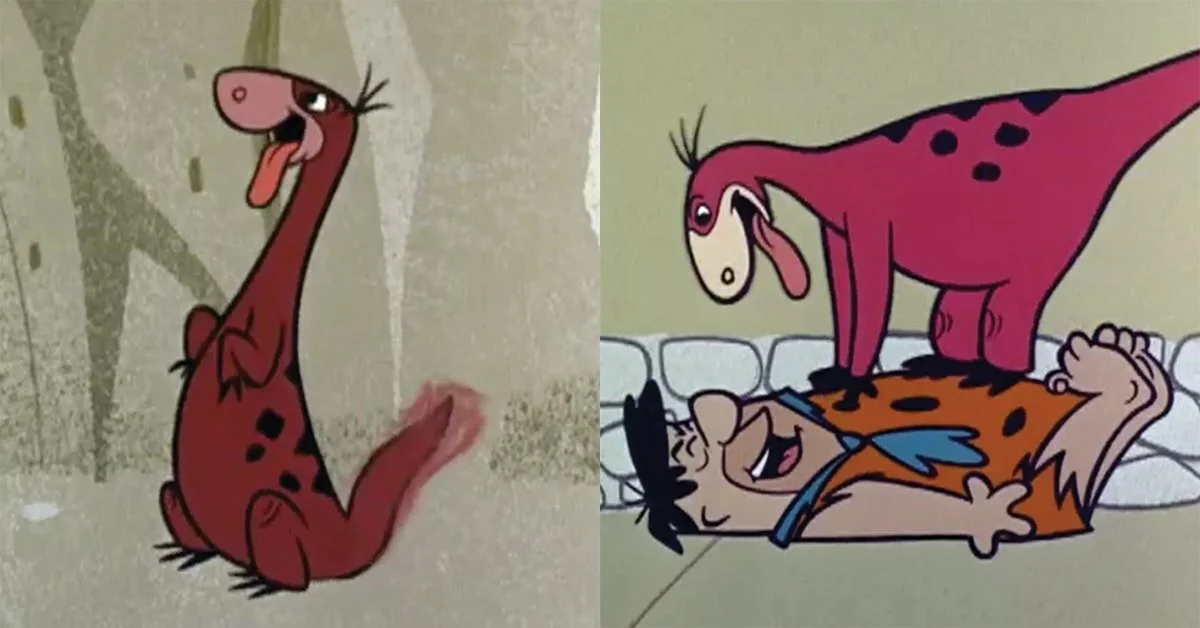I used to take refuge from the workday by watching TV during dinner. An old sitcom. A bit of news, maybe.
But there’s not much comfort on the airwaves these days. Last Thursday night, news outlets announced accelerated efforts to “flatten” the COVID-19 curve. Governors of several U.S. states have asked residents in “non-essential” professions to stay home. “Only leave your homes for provisions, medical care or to walk your dog,” they strongly urged.
Saturated with the viral viral, I switched stations — and landed on a purple dinosaur about the size of a human. Could it be? Yes. It was an episode of the first-ever prime-time animated show, The Flintstones, where the “modern Stone-Age family” adopts Dino, a loquacious Snorkasaurus.
“Ah! ’tis morning!,” Dino says upon spying Fred and Barney in their campsite. “And with the morning, the hunters! And with the hunters, the chase!”
In the only episode where Dino waxes like a Shakespearian Yogi-Bear, the Flintstones and Rubbles troll the wilderness for sources of protein that will fill their bellies without emptying their wallets. Fred schools Barney on their target prey by drawing a primitive outline in the sand with a stick. Dino pops his head up from a rock behind the pair, grabs the stick out of Fred’s hand and corrects the portrait. His snarky tutorial is delivered with a joie de vivre that completely disarms his pursuers and allows him a quick escape.
The chase is on. Dino thwarts Fred and Barney at every turn. Finally, Dino ducks into a tent frightening Fred’s wife, Wilma, and Barney’s wife, Betty. The dapper dinosaur reassures the ladies who in turn scold their husbands for intending to harm “such a charming animal.” Dino winds up hitching a ride home on the families’ trailer and finds utility as The Flintstones’ multi-tasking housekeeper and erudite butler.
Devotees of the show probably scratched their heads when this episode first aired. A cuddly but mute Dino had already appeared as a smaller, blue dinosaur with a green snout during the show’s opening sequence. In the fourth episode, it is a pinkish Dino sporting a pale yellow snout who tackled Fred on the front lawn, slathered him with homecoming kisses and yapped with glee. With the exception of “The Snorkasaurus Hunter” (season 1, episode 18), Dino emits nothing other than yips, yelps and simpering moans. He is the family Dogasaurus who does not answer phones or do windows. Continuity is often the first casualty of a show wrestling with its identity.
Dino featured prominently in Flintstones’ episodes confronting heady pet topics for the early 1960s. Fred and Barney search exhaustively when “Dino Disappears” (season 4, episode 4) after Fred mistakenly believes that Dino has attacked his daughter, Pebbles, out of jealousy. In “Dino Goes to Hollyrock,” (season 3, episode 1) Fred regrets sending Dino off to be a movie star and weeps upon seeing his picture on the mantle. Through Fred’s bouts with temper and his occasional rebuffs, Dino remained as steadfastly loving and loyal as any “live” TV pet.
Animal characters in other animated shows captured my imagination. Osamo Tezuka’s 1965 venture into intergalactic relations, The Amazing Three, brought a band of extraterrestrials to Earth to help save it from itself. To remain incognito, the trio assumed the shapes of a bunny, horse and duck. Over time, however, it was Dino, the Dogasaurus, who captured — and held — my heart.
We interrupt this program to bring you a special bulletin: While sheltering in place, it’s okay to snuggle with your favorite TV pet.
Who’s your favorite TV pet?

